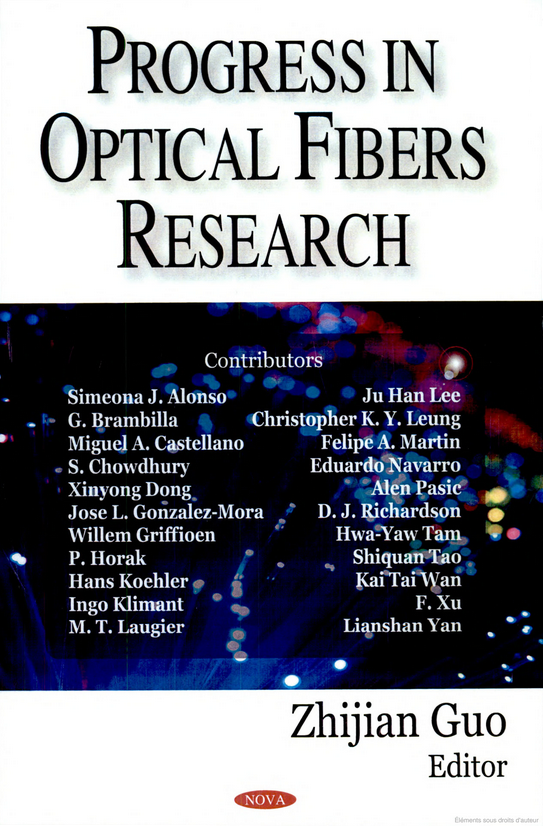

Progress in Optical Fibers Research
An optical fiber chemical sensor senses the existence of and/or measures the concentration of a chemical species through detecting the interaction of light guided inside an optical fiber with the chemical species or its derivatives brought into the fiber or diffused into the fiber as a sensing signal. A fiber optic sensor based on detecting the interaction of light with the analyte compound itself is called an intrinsic optical fiber sensor. An intrinsic fiber optic sensor usually has very limited sensitivity, which is especially true to gas sensing. The sensitivity of fiber optic gas sensors can be significantly improved through the incorporation of a chemical reagent or a specially prepared material to convert the analyte compound to a derivative or to concentrate the analyte compound inside the fiber for detection. Sol-gel techniques have been developed for prepared Nanostructured porous materials. These nanoporous materials have been used as coating to design evanescent wave based fiber optic sensor for monitoring moisture, ammonia, hydrogen, methane. The sol-gel derived nanoporous materials have also been used for fabricating porous silica optical fibers. These porous silica optical fibers have been used for designing active core fiber optic sensor for highly sensitive detecting trace gaseous compounds in high temperature gas samples. The principle of fiber optic sensors, techniques for preparing nanostructured materials and application of nanostructed materials in fiber optic gas sensor design will be discussed.
(Chapter 7), Nova Publishers, New York, 2007 (ISBN: 1-60021-868-7)
Zhijian Guo




